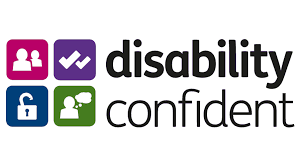What NOT to do when hiring

Hiring the right candidate is a crucial task that can shape the future success of a business. However, the road to finding the perfect fit is riddled with potential pitfalls. In this blog, we'll explore some of the worst things to do when hiring someone, and how steering clear of these mistakes can lead to better outcomes for both employers and candidates.
1. Neglecting a Clear Job Description: One of the gravest errors in the hiring process is presenting a vague or unclear job description. This sets the stage for confusion and misalignment between employers and candidates. A precise job description not only attracts the right applicants but also helps candidates understand the expectations and responsibilities associated with the role..
2. Rushing the Recruitment Process: Impatience can be detrimental when it comes to hiring. Rushing through the recruitment process increases the likelihood of making hasty decisions, resulting in a mismatch between the candidate's skills and the job requirements. Take the time to thoroughly evaluate resumes, conduct interviews, and assess cultural fit to make informed hiring decisions.
3. Ignoring Cultural Fit: Skills and qualifications are important, but cultural fit is equally crucial. Ignoring the cultural aspect can lead to a toxic work environment and decreased employee satisfaction. It's essential to assess how well a candidate aligns with the company's values, work culture, and team dynamics.
4. Overlooking Reference Checks: Reference checks are not a mere formality; they are a valuable tool for verifying a candidate's qualifications and work history. Skipping this step can lead to hiring someone with a misrepresented skill set or a poor track record. Thorough reference checks provide valuable insights into a candidate's past performance and reliability.
5. Failing to Communicate Clearly: Effective communication is the backbone of a successful hiring process. Failing to keep candidates informed about the status of their application or neglecting to provide feedback after interviews can tarnish the employer's reputation. Clear and transparent communication ensures a positive experience for candidates, even if they are not ultimately selected.
6. Ignoring Diversity and Inclusion: A lack of diversity in the hiring process can have long-lasting consequences. Ignoring diversity and inclusion practices limits the perspectives and talents brought into the organization. Businesses that embrace diversity benefit from a richer pool of ideas, increased creativity, and a more inclusive work environment.
7. Neglecting Employee Onboarding: The hiring process doesn't end with extending an offer; effective onboarding is equally critical. Neglecting this phase can result in a disoriented new hire who takes longer to become productive. A well-structured onboarding process sets the tone for a positive employee experience and contributes to long-term employee retention.
Avoiding these worst practices in the hiring process is vital for fostering a healthy and productive work environment. By investing time and attention into each stage of recruitment, employers can build a team of talented individuals who not only possess the necessary skills but also contribute positively to the company culture and overall success.
Find out how to source an secure a diverse, talented team with our FREE guide here.





